SNEP Community Action
SNEP is committed to taking the following priority actions over the next five years, as outlined in our Strategic Plan. These actions will be used together to support new implementation projects and policies to achieve the goals of safe and healthy waters, thriving watersheds and natural lands, and sustainable communities.
Actions:
- Increase Local Capacity to Complete Projects and Adopt New Policies
- Increase Available Solutions
- Ensure Diverse Representation in Program Decision-making Desired Outcome
- Demonstrate Ways to Address Common Challenges Approach
- Increase Community Leaders' Understanding of the Benefits of Restoration Projects Desired Outcomes
Increase Local Capacity to Complete Projects and Adopt New Policies
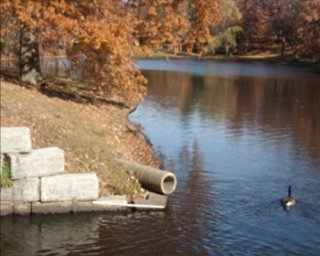
Increase local capacity by providing financial and technical assistance to communities for the application of environmentally sustainable solutions towards the restoration of water quality and the stewardship of natural habitats
Priority Actions:
- Continue to allocate at least 80% of SNEP funding to establish and maintain funding mechanisms to: (1) provide technical assistance to communities and tribes; (2) support holistic watershed restoration projects that demonstrate ways to address common water quality, habitat, and storm resilience challenges in the region; (3) support local implementation projects; and (4) support the development and evaluation of nontraditional technologies and new regional approaches to solve common challenges.
- Share best practices with municipal and tribal staff and consultants for planning ecological restoration and share systematic cost-efficient approaches to gain agreement on selection of solutions.
- Provide opportunities (workshops, site visits, webinars, symposia, newsletters, peer-to-peer discussions) to bring community professionals and local decision-makers together with scientists, businesses, tribal and municipal staff, NGOs, and regulators to share information about effective practices, both traditional and nontraditional, to find joint solutions to facilitate their broadscale use in the region.
- Provide communities, tribes, and regional decision-makers with clear, accurate information about benefits achieved from SNEP's site-specific implementation projects and holistic watershed restoration efforts and describe ways those benefits may be achieved in other areas in the region.
- Encourage the development of regional strategies and tools that can be used to overcome systemwide barriers to project/policy/ solution implementation.
- Encourage municipalities to pursue sustainable financing efforts when applying for SNEP Watershed Implementation Grants or SNEP Network Technical Assistance Awards.
- Partner with Environmental Justice groups in the SNEP region to understand the ways they are affected by water quality and habitat degradation and related climate change impacts and pursue steps to minimize the resulting effect on the health, wealth, and welfare of these communities.
- Educate professional staff (towns, tribes, states, and their consultants) about the ecosystem services and economic benefits of restoration to give them the information needed to justify investments in implementing environmental solutions.
- Educate professional staff (towns, tribes, states, and their consultants) about the social, environmental, and economic risks of inaction on environmental issues especially climate change.
- Encourage and support collaboration between municipalities on financing, leadership development, peer exchange, and environmental projects
Increase Available Solutions
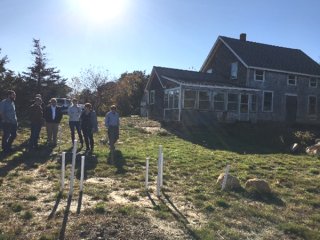
Increase available solutions to address stressors/ issues by spurring the development, evaluation, and dissemination of innovative technologies, financing approaches, and policy development.
Priority Actions:
- Focus on the development and evaluation of nontraditional technologies and techniques, including:
- Innovative/alternative septic systems capable of reducing nitrogen, contaminants of emerging concerns (CECs), and pathogens.
- Stormwater controls for land-constrained areas capable of reducing nitrogen, CECs and pathogens.
- Nature-based protection and restoration technologies capable of protecting saltmarshes, eelgrass beds, and/or riparian corridors vulnerable to nutrients, storms, sea-level rise, and erosion.
- In-situ technologies to reduce nutrients, including permeable reactive barriers (PRBs), wetland bioreactors, and in-water treatment to reduce the occurrence of harmful algal blooms.
- Aquaculture to reduce nutrients and support food production to sustain a more robust seafood economy.
- New monitoring technologies capable of predicting or determining changes in nutrients and harmful algal blooms, such as unmanned aerial vehicles (drones), real-time monitoring and remote sensing.
- Promote regional or watershed-wide approaches and planning initiatives, including:
- Multi-town wastewater solutions.
- New market-based approaches to restoration financing.
- Stormwater solutions designed to reduce impacts on nutrients, peak flows and flooding, and sustain river baseflow and habitat function.
- Eelgrass and saltmarsh restoration and protection.
- Harmful algal bloom prediction, monitoring, confirmation, treatment and information sharing.
- Facilitate a coordinated SNEP region-wide approach to pilot the use of priority nontraditional technologies, including:
- Identifying priority technologies in need of effectiveness evaluation and representative locations.
- Developing technology assessment, installation, operation and maintenance protocols, and construction protocols.
- Encouraging development and use of common monitoring protocols, investigating the potential for a regional data portal, and supporting broad access to monitoring data.
- Determining and assessing barriers to adoption and widespread use; e.g., permitting, economic feasibility, public perception.
- Exploring the feasibility of extending SNEP's approach among related programs in the Northeast also seeking adoption of new technologies.
Ensure Diverse Representation in Program Decision-making Desired Outcome
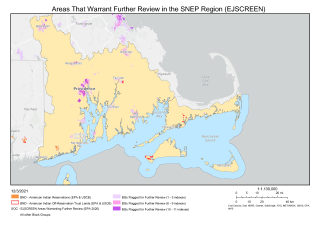
Ensure diverse representation of community needs, science, and management solutions in SNEP committees to include a wide range of perspectives and input in program decision-making by building relationships with Environmental Justice (EJ) communities, municipal/state/federal governments, tribes, non-profit organizations, businesses, and academia.
Priority Actions:
- Increase representation of community needs, businesses, Environmental Justice issues, and the academic research community on the SNEP Steering Committee and Policy Committee to improve understanding of local needs and leverage a broader range of resources.
- Increase understanding of local community needs and leverage a broader range of input by increasing involvement of overburdened communities, businesses, municipalities, community organizations, and academia in SNEP priority setting.
- Include municipal representatives from the four major subregions to incorporate local needs in the SNEP Steering Committee.
- Explore the feasibility and benefits of establishing a SNEP environmental justice committee to inform program actions.
- Explore the feasibility and benefits of establishing a "blue coast business partnership" focused on improvement of water quality and habitat to leverage business resources to support local solutions across the entire SNEP region
- Examine the feasibility and benefits of establishing a SNEP research consortium with representation by regional academic institutions and government agencies to share ongoing research relevant to SNEP goals and actions.
- Ensure EPA, the SNEP Network, the SWIG, and the two NEPs coordinate and build on each other's outreach, engagement, and actions in EJ communities.
- Coordinate with the EPA Region 1 EJ Team and use its guidance and SOPs to support systemic and sustained community-driven change.
Demonstrate Ways to Address Common Challenges Approach
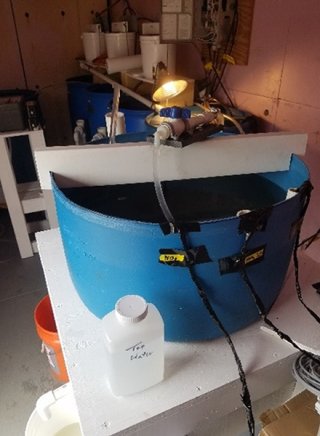
Demonstrate ways to address common challenges by selecting pilot watersheds to support a holistic and targeted watershed management approach that is tailored to the differing characteristics in the region, with a focus on innovative, systemic solutions to environmental stressors that can be transferred to other areas in the SNEP region and beyond
Priority Actions:
- Establish representative pilot watershed locations across the region to support demonstrations of holistic approaches as examples to communities of ways to address common challenges efficiently, cost-effectively, and successfully.
- Implement a watershed-based approach that demonstrates how to tailor best management practices (BMPs) to different geologic, hydrologic, and habitat and physical characteristics; pollution sources; climate change scenarios; and community characteristics
- Quantify and widely disseminate the benefits of pilot watershed restoration efforts, large watershed implementation projects, and innovative technology pilot applications.
- Establish a standard methodology, including pre-and post-monitoring protocols, capable of tracking and quantifying the full range of benefits achieved by holistic watershed projects and site-specific implementation projects.
- Explore development of a systems-level regional approach to monitor the development and success of innovative solutions post-implementation and track environmental change over time in the SNEP region.
Increase Community Leaders' Understanding of the Benefits of Restoration Projects Desired Outcomes
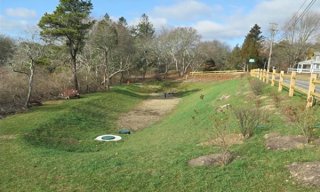
Increase community leaders' understanding of benefits achieved by supporting clean water, healthy natural lands, and sustainable practices by quantifying multiple benefits of ecosystem/habitat restoration projects.
Priority Actions:
- Partner with scientists, planners, and economists to compile available data and initiate applied research to understand and quantify the multiple environmental, economic, health, and social benefits of ecosystem/habitat restoration projects.
- Establish a standard methodology capable of tracking and quantifying the full range of benefits achieved by holistic watershed projects and site-specific implementation projects.
- Quantify benefits of pilot watershed restoration efforts, large watershed implementation projects, and innovative technology pilot applications, and share that information with local municipal and tribal leaders and staff, and their consultants through reports and scientific articles, technical assistance visits, site visits, webinars, newsletters, and symposia.
- Encourage new SNEP local watershed project proposals to provide multiple benefits for surrounding communities (e.g. projects that could benefit community health, wealth, and wellness) and to maximize and measure those benefits where possible.
- Update SNEP grant and contract reporting requirements to obtain information necessary to begin tracking co-benefits in the next five years.
- Support applied research projects focused on quantifying the regional return of investment (shellfishing/fishing, recreation, jobs, public health, other) achieved through improving coastal water quality.
- Consider the future impacts of climate change by quantifying co-benefits of solutions for supporting community resilience and share information with local leaders on the cost-savings potential of adaptive and restorative climate solutions.
- Partner with local community leaders and organizations to incorporate the quantification of social and economic benefits of clean water, healthy natural lands, and sustainable practices into regional decision-making and long-term policy practices.
